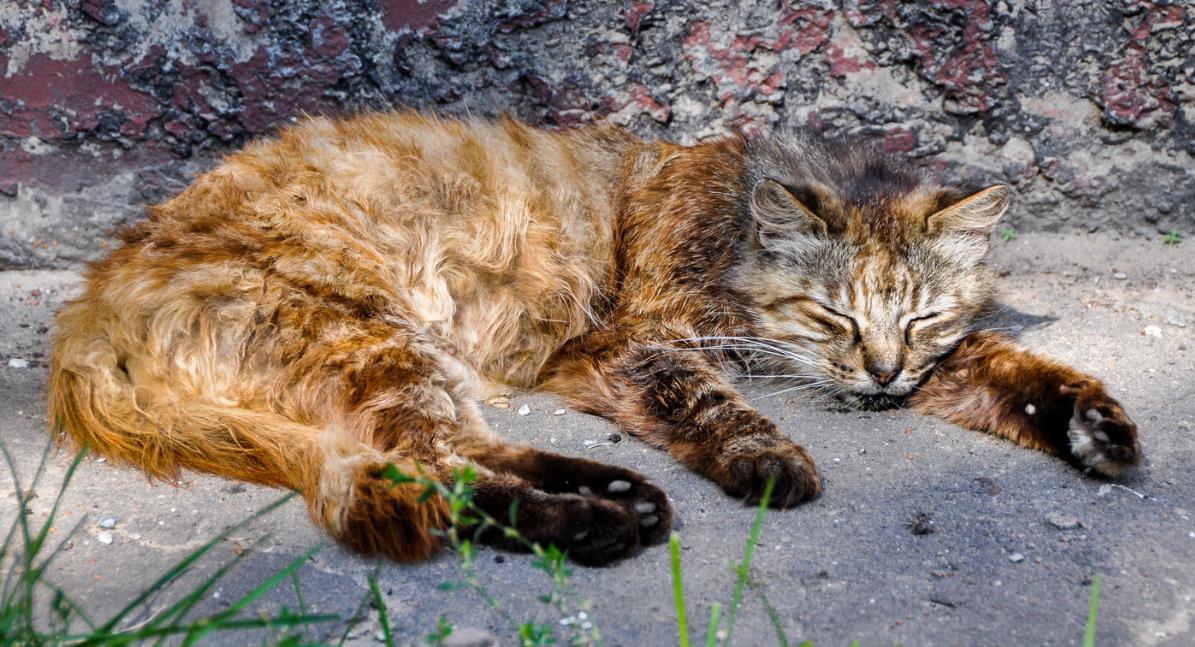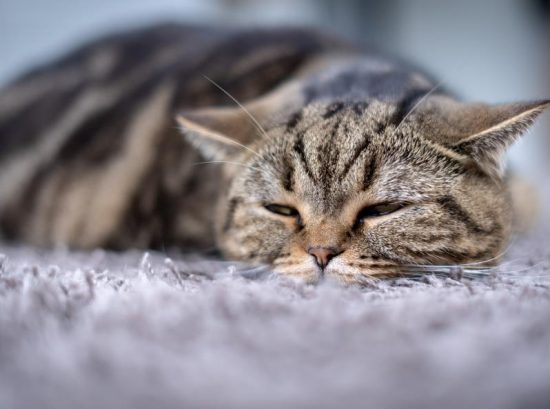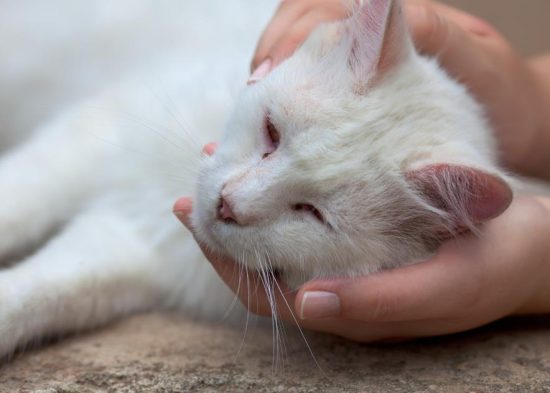What Do Cat Seizures Look Like? Signs and Symptoms
Learn to spot the signs and manage your feline’s health. Discover what cat seizures look at and how to react for their well-being.

As a cat owner, you strive to ensure the well-being of your feline companion. However, there may come a time when you witness something concerning: a seizure. These episodes can be alarming and leave you searching for answers. What do cat seizures look like? How can you recognize the signs and symptoms?
The signs and symptoms of cat seizures can vary and are sometimes surprising. While convulsions and limb rigidity are commonly associated with seizures, there are other manifestations to be aware of. Your cat may exhibit abnormal vocalizations, experience a loss of consciousness, or display unusual behaviors such as tail chasing or aggression.
Additionally, seizures can disrupt your cat’s control over their bodily functions, resulting in urinary or bowel control loss. Recognizing these signs is crucial, as it allows you to take the necessary steps to ensure your cat receives prompt veterinary assistance. So, how can you best identify and respond to cat seizures? Let’s explore the signs and symptoms further to give you the knowledge and confidence you need to support your beloved furry friend.
Understanding Cat Seizures: Types and Causes

Cat seizures can be classified into two categories: intracranial seizures and extracranial seizures. Intracranial seizures are caused by factors within the skull, such as brain tumors, infections, trauma, inflammation, and parasites. On the other hand, extracranial seizures are triggered by factors outside the skull, including liver or kidney disease, ingestion of human medications, exposure to flea or tick medications not safe for cats, heat stroke, infectious diseases, and high blood pressure. Understanding these different types and causes can help identify the underlying issue and guide treatment.
Defining Intracranial and Extracranial Seizures
Intracranial seizures are seizures that originate from within the skull. They are caused by various conditions affecting the brain, such as tumors, infections, trauma, inflammation, and parasites. These seizures may result in abnormal electrical activity in the brain, leading to the characteristic symptoms observed during a seizure. Intracranial seizures require further investigation and treatment to address the underlying cause.
Extracranial seizures, on the other hand, are seizures that arise from factors outside the skull. These seizures can be triggered by various conditions not directly related to the brain, such as liver or kidney disease, ingestion of human medications, exposure to flea or tick medications not safe for cats, heat stroke, infectious diseases, and high blood pressure. Identifying and addressing these extracranial triggers are essential for managing and preventing seizure episodes in cats.
Common Intracranial Sources: Tumors and Trauma
Intracranial seizures often stem from underlying conditions like brain tumors and trauma. Brain tumors can develop within the brain tissues or from structures surrounding the brain, such as the meninges or the pituitary gland. These tumors can disrupt normal brain function and trigger seizures in affected cats. Additionally, head trauma or injuries to the skull can also lead to intracranial seizures. The severity and location of the trauma can determine the likelihood of seizures occurring.
Extracranial Triggers: Diseases and Environmental Toxins

Extracranial seizures in cats can be caused by various diseases and exposure to environmental toxins. Liver or kidney diseases, such as hepatitis or renal failure, can lead to metabolic imbalances and adversely affect the brain, resulting in seizures. Ingestion of certain human medications, like antidepressants or anti-inflammatory drugs, can also trigger seizures in cats. Furthermore, exposure to flea or tick medications not safe for cats, high environmental temperatures causing heat stroke, infectious diseases, and high blood pressure can contribute to extracranial seizures.
What Do Cat Seizures Look Like?
Cat seizures can present in various ways, making it important to recognize the different manifestations. Partial seizures may result in odd behaviors like tail chasing or staring blankly at a wall. These seizures typically involve specific areas of the brain, causing abnormal movements or behaviors that are limited to a particular body part or side of the body. During a partial seizure, your cat may exhibit repetitive movements, such as twitching or jerking in one limb. This can be subtle and easily missed, but careful observation can help identify these symptoms.
On the other hand, silent seizures do not have visible convulsions and can be more challenging to identify. Instead of the typical shaking or jerking movements, these seizures may be characterized by disorientation and disorganized behaviors. Your cat may appear confused, take aimless walks, wander aimlessly, become restless, or exhibit unusual behavior such as repetitive scratching or chewing without cause.
It is crucial to observe your cat closely and consult with a veterinarian if you suspect they are experiencing seizures. Remember that seizures can vary in intensity and duration, so it’s essential to document any unusual behaviors or activities during an episode to provide accurate information to your vet.
Recognizing the Symptoms of a Cat Having a Seizure

Recognizing the symptoms of a cat having a seizure is crucial for their well-being. By being aware of these symptoms, you can provide timely care and seek veterinary assistance when necessary. Common symptoms of cat seizures include:
- Twitching of the eyelids or face
- Excessive drooling
- Loud vocalizations
- Disorientation
- Aggressive behavior
- Falling over
- Loss of consciousness
- Shaking uncontrollably
If you notice any of these symptoms in your cat, it is important to remain calm and ensure their safety during the seizure. Keep the environment quiet and remove any objects that could potentially harm your cat. Avoid touching them during the seizure as they may inadvertently scratch or bite. After the seizure, provide them with a calm and comfortable space to rest.
If your cat experiences seizures, it is recommended to consult with a veterinarian to determine the underlying cause and develop an appropriate treatment plan. Your veterinarian may recommend diagnostic tests, such as blood work or imaging, to identify any underlying conditions contributing to the seizures.
Emergent Care: How to Stop Cat Seizures
When your cat is having a seizure, it is important to know when to seek immediate veterinary assistance. Seizures lasting more than a few minutes, recurrent seizures, or seizures accompanied by severe symptoms require immediate attention. If you notice any of these signs, it is recommended to contact your veterinarian or emergency vet hospital for guidance and support.
In the event of a seizure, the safety and well-being of your cat should be a top priority. To ensure safe transport to emergency care, take the following steps:
When to Seek Immediate Veterinary Assistance
- Seizures lasting more than a few minutes
- Recurrent seizures
- Seizures accompanied by severe symptoms
Steps for Safe Transport to Emergency Care
- Use a thick towel to pick up and wrap your cat gently. This will help prevent any accidental scratching or injury during transport.
- Handle your cat with care and ensure their head is supported.
- Place your cat in a secure carrier or box to keep them safe during the journey.
During your visit to the veterinary office, be prepared to provide essential information that can aid in the diagnosis and treatment of your cat’s seizures. This may include details about the frequency and duration of the seizures, vaccination history, and any other relevant medical information. By actively participating in the conversation with your veterinarian, you can contribute to the overall care and well-being of your cat.
Nutritional Management and Long-Term Care for Cats with Seizures
Nutritional management plays a crucial role in the long-term care of cats with seizures. To ensure optimal health for your cat, it is essential to consult with a veterinarian who can evaluate their nutritional needs and address any underlying diseases or conditions that may contribute to seizures.
A complete and balanced diet is key in providing the necessary nutrients for your cat’s overall well-being. Choosing a cat food that is high in antioxidants and omega-3 fatty acids can help reduce the impact of these conditions on the brain, potentially minimizing the frequency and severity of seizures. Your veterinarian can guide you in selecting the right food and develop an appropriate feeding plan that suits your cat’s specific needs.
In addition to proper nutrition, regular veterinary check-ups are crucial for cats with seizures. These check-ups allow your veterinarian to monitor your cat’s health, make any necessary adjustments to their treatment plan, and address any new concerns that may arise. If your veterinarian prescribes medication to manage your cat’s seizures, following their instructions carefully and regularly discussing any changes or concerns you may have is important.
By providing your cat with the proper nutritional management and long-term care, you can help improve their quality of life and minimize the impact of seizures. Working closely with your veterinarian, you can develop a holistic approach to managing your cat’s seizures and ensure their ongoing health and well-being.
FAQs on What do cat seizures look like
What are the signs and symptoms of cat seizures?
The signs and symptoms of cat seizures may include twitching of the eyelids or face, excessive drooling, loud vocalizations, disorientation, aggressive behavior, falling over, loss of consciousness, and shaking uncontrollably.
What are the types and causes of cat seizures?
Cat seizures can be classified into two categories: intracranial seizures caused by factors within the skull, such as brain tumors, infections, trauma, inflammation, and parasites, and extracranial seizures triggered by factors outside the skull, including liver or kidney disease, ingestion of human medications, exposure to flea or tick medications not safe for cats, heat stroke, infectious diseases, and high blood pressure.
What does a partial seizure look like in cats?
A partial seizure in cats may result in odd behaviors like tail chasing or staring blankly at a wall.
What does a silent seizure look like in a cat?
Silent seizures in cats do not have visible convulsions but may be characterized by disorientation and disorganized behaviors.
How can I stop cat seizures?
If your cat is having a seizure, it is recommended to seek immediate veterinary assistance. Seizures lasting more than a few minutes, recurrent seizures, or seizures accompanied by severe symptoms require immediate attention.
Can a cat survive after a seizure?
Cats can often survive after a seizure, but it is crucial to seek veterinary care to identify and address the underlying cause of the seizures.
What can I feed my cat for seizures?
Nutritional management is crucial in the long-term care of cats with seizures. It is essential to consult with your veterinarian to develop an appropriate feeding plan considering any underlying diseases or conditions that may contribute to seizures. Providing a complete and balanced diet that is high in antioxidants and omega-3 fatty acids can help reduce the impact of these conditions on the brain.





